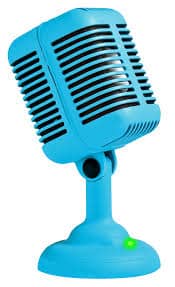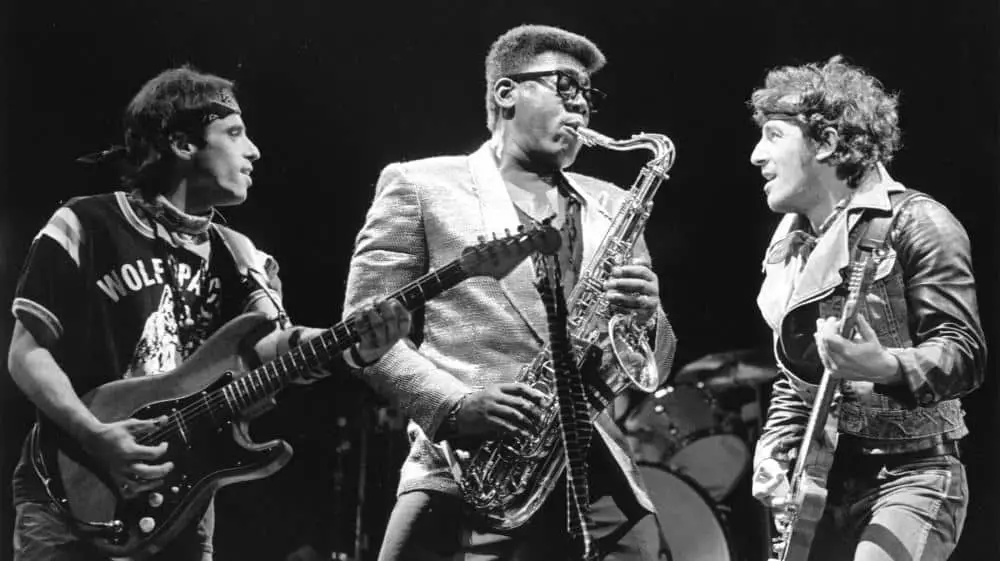Miking a Saxophone at Close Miking position seems to be the best solution for recording and live play of a Saxophone but the question is how close and at what placement position without losing any acoustical qualities. This article asks the question of What’s the best Mic placement for a Saxophone?
1. The best mic placement for recording Sax is either:
Close Miking 6-12″ off the Bell
At a 0-45-or 90-degree angle depending on the type of Sax
2. Sax Length-halfway up the Sax around 20″ on the sweet spot
Using Ribbon or Dynamic figure 8 Polar Pattern directional or cardioid Mic
at spots slightly off-axis
The different types of Saxophones all need a different type of placement for actuating the best frequencies that they offer Knowing the best position and type of mic to use can give you that edge on the stage and on the edge.
Recording Saxophone
Most Saxophones are made of Brass but are considered part of the Woodwind family and function in the same way as a clarinet does. The player blows across a single reed that will vibrate across the mouthpiece which excites the column of air inside.
A significant amount of the sound comes from the body of the instrument as opposed to the Bell. That is the reason that positioning the mic directly in the Bell of the Sax won’t be the most correct position. Most of the warmth and fulness will be coming from the many openings along Sax’s body.
With some experimentation, you can find the sweet spot of balance and warmth that will be the best place for your mic to be in or near. The best sound is like all instruments is one that creates the best overall sound between the room, player, and the microphone’s ability to cover the frequencies that you are looking for or that you are listening for.
In a lot of cases, this could be a cheaper mic or a bigger or smaller room. It’s a matter of preference so in a Home Recording setting always use a starting point and then make small incremental changes and then note them. In a studio, someone else gets paid to do that.
There is just no one way to mike any instrument just suggestions based on one person’s experience. Saxophones are no different. Moving like a turtle is what a wise old man use to tell me. That applies to financial endeavors or microphone placement when you’re chasing a sound in your bedroom studio with a 100-dollar mic or in a professional studio environment with Sound Engineers and a 5,000 Microphone.
From being a Songwriter and recording in my little studio in my garage I learned that mic placement can make all the difference in your song breaking it or making it so cover the bases and notes and make off any changes in any instrument’s position.
The saxophone comes in all shapes and sizes. Sounds from a Saxophone are fairly well distributed all along with the Sax between the finger holes and the bell. The bell at the end of the saxophone produces only a part of the sound.
Any open hole on the instrument also produces sound. As a result, the saxophone radiates sound in a much wider pattern than brass, for example, and a common technique is to position microphones to pick up sound from the holes and the bell.
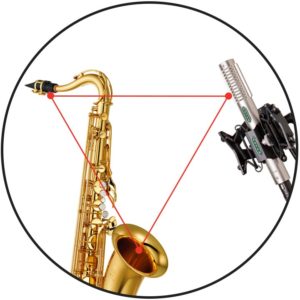 The Sax can create sound in the shape of a triangle, where the top of the horn and the bottom of the horn, and the mic make an equilateral triangle. You get a nice, balance of the reed moving lower where the highs are located to the low-end from the bell. The distance of the mic is dependent on the size of the horn: the larger the horn, the farther away it’s going to be to create the equilateral triangle.
The Sax can create sound in the shape of a triangle, where the top of the horn and the bottom of the horn, and the mic make an equilateral triangle. You get a nice, balance of the reed moving lower where the highs are located to the low-end from the bell. The distance of the mic is dependent on the size of the horn: the larger the horn, the farther away it’s going to be to create the equilateral triangle.
More importantly, is that the player in the Recording Studio must try to stay in the placement setting so that the sound from this triangle stays consistent, unlike a Live setting where the sound is going to drift and is supposed to be a little uneven where the frequencies are moving in and out.
Dudes get paid a lot of money to develop the proper positions and use the proper microphones to get proper sound and can mix them down for the most proper recordings and you’re not trying to compete with them.
The best advice I can give is to listen to people with experience and get a Starting point with a dependable microphone that can pick up frequencies and directions on the instrument you recording whether it’s a Drum Guitar or Horn.
If the room sounds boxy or too reverberant for your taste you should place the microphone close to the saxophone in order to eliminate the room sound as far as possible. Reverb, ambiance, or delay (echo) can be added afterward, during the mixing process.
Stay basic. use the Room as an EQ and Make your song sound the best you can. It will never compete with a professional Studio but it will sound good enough to present your original music and that’s why you recording it. To Present it to the world, right?
Best Microphone for Recording Saxophone
The choice for the Studio in a Professional setting would be the Ribbon mic that was used by the great horn players back in the day when the greats were at work but the Ribbon Mics were a common mic in the pro studio. The a real need for one in a Home studio where you may want some tracks lined with some Sax in the background to make them sound funkier or a little more R&B you should stay in the price range.
Use a Dynamic Mic like the standard SM 57 or 58 for a real quality sound with a low price tag. Using a Dynamic Mic can get you closer to the Bell without losing frequency. Use a cardioid mic that picks up sound from the front and rejects sound increasingly as you move off to the side.
- Using a figure 8 Polar Pattern
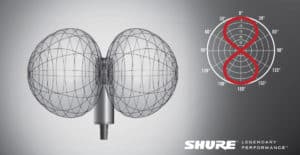 Mic can get you a little closer to the Sax or an Omni-Directional microphone.
Mic can get you a little closer to the Sax or an Omni-Directional microphone. - Use a directional or cardioid polar pattern mic to isolate the sound of the sax A directional mic focuses on the sound coming from a single instrument. It isolates the instrument from room noise, ambient noise, and other instruments.
Keep in mind that directional microphones can experience something called the proximity effect. This means that when you place a directional mic close to the sax, there is often an increase in bass or low-frequency sound. This isn’t always a bad thing, but it means that it is harder to find the perfect position with a directional mic.
Unless you’re doing some Jazz where the focus is on the Sax. You would probably be doing those tracks in a pro studio and bankrolling some dough. Be reasonable and get some bang for the buck. Or go big and best with a studio-grade Coles 4038 Ribbon Microphone The classic Coles 4038 is great for saxophones.
It has a figure of 8 polar patterns so it’s best when room ambiance or spill from other instruments is not an issue. For a specific “retro” sound I also like to use a vintage HMV ribbon mic or pair of them, but you are unlikely to find one of these.
Royer Labs R-121 Large-Element Ribbon Microphone, NickelLike many of the best classic ribbon mics, the R-121 has a figure-8 pattern, output level comparable to a dynamic mic, and a warm, realistic tone and flat frequency response. But that’s where the similarities end: By using advanced materials and a blend of cutting edge and old-school, hand-build construction techniques, the R-121 is an extremely versatile and user-friendly ribbon mic that can stand up to the most demanding tasks.
Cranked-up electric guitars, close-up brass, drums – you name it, the R-121 will help you record it with realism you have to hear to believe. R-121 is solid enough to give it a lifetime warranty. that will help get that soulful vintage horn sound with a tasteful high-mid roll-off. Many ribbon mics have a natural scoop in the 2 kHz to 4 kHz range, which is where much of that extra Saxophone squeak and pop lives.
Ribbon mics do a great job naturally preventing this from landing in the final mix. Another great mic to use is the Shure KSM44 Large dual-diaphragm Microphone – A Large Diaphragm Multi-Pattern Condenser Microphone that comes highly recommended but is steep in price. Select a condenser microphone for a more economical recording mic. Quality condenser microphones are a more affordable option for a sax-recording mic than a ribbon mic.
Choose a condenser mic that doesn’t overemphasize the high-mid range from the sax to avoid recording too much hiss and pop from the sax. The CV12VR, Neumann U87, U47, Rode NT1, AKG 451, and AKG 414, are all examples of good-quality condenser microphones that you can use for recording a sax.
Mic saxophone
The closer you are miking the Sax the warmer the sound resulting in a darker sound. If you want a massive amount of low frequency to be picked up, then experiment with placing the mic inside the bell of the horn. This can, however, make for a pretty abrasive sound which you’d probably have to compensate for by rolling off some low frequencies using EQ. Definitely not a very common way to position your mic, but since it’s music and there are no rules.
- Start around 6-12 inches from the Bell
- Point the mic downwards at a 45-degree angle for a bigger and more aggressive sound.
- Otherwise, pointing the mic straight towards upper keyholes at a 90-degree angle will result in a “smoother” sound.
- You can find some higher notes by moving the mic from one side of the Bell to the other.
- Miking the Body of the instrument along the openings of the body will pick up a lot of warmth through the many openings of the Sax
- Mixing the sound of the Bell and the Body can make a blend of the frequencies best for recording.
- Backing off or using Distance a little further will open the sound of the room with the Bell and the Body
- Experiment with Distance and Angles
Miking from a Saxophone Length
- To pick up more room sound you can start at a Sax length instead of the 8-12 inches. This is good for a studio where there is more of a controlled setting environment. Where there is no spillover from other instruments. The sound of a saxophone is fairly well distributed between the finger holes and the bell. The bell at the end of the saxophone produces only a part of the sound. Any open hole on the instrument also produces sound.
- As a result, the saxophone radiates sound in a much wider pattern than brass, for example, and a common technique is to position microphones to pick up sound from the holes and the bell. Here the mic will pick up more room and some higher frequencies. The closer to the Bell the lower the frequencies. This position gives more presence, more articulation, more clarity, and a sense of power.
- Mic the Sax halfway up the instrument. In this position, around 20 inches at the sweet spot where you can attain a natural blended, balanced sound. Because the horn is further out in Distance the mic will pick up a wider version of frequency and the ones that are expelled from the tune holes in the instrument might not be picked up by the mic.
- Move slightly Off-Axis to the right and left
Miking Saxophone Live
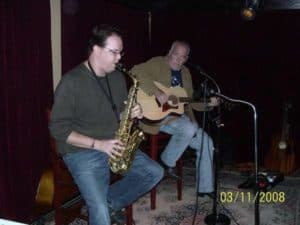
With any instrument on stage playing live certain criteria can limit the choice of microphones right off the bat. There has to be the understanding that the stage is not a recording studio where the environment is controlled acoustically. There are other instruments, causing a certain amount of bleed. Therefore the sensitivity of a mic and its pickup pattern must be taken into consideration.
Every musician remembers looking at the back of some of their first microphones and trying to figure out Polar Patters and Frequencies. Man, I am a Drummer and Acoustic guitar player when I left my class I didn’t care about miking my drums until I realized how important it was and really how simple it is to understand.
The Live Sax needs to be miked so the source which is about on average, 20 inches from the top to the bottom of the horn, with the sweet spot being the center is amplified. For a lot of professional players miking off the Bell is not an option.
Close miking losses some of the dynamics when performing. When I heard this, it made sense to me even though I don’t play the Saxophone. Soft will still sound very present, and you will pay in quality in the high and/or low register of your horn depending on how the mic is angled.
A Sax Player can avoid some of this by using a Clip-On Mic but some still prefer a microphone stand. When you watched Clarence Clemmons play who was a master on stage, he didn’t hang around Bruce or Max the Drummer in Concert, most of the time he was off in a corner to stay away from bleeding from the rest of the band.
The E Street Band was a powerfully loud, Dynamic Band. When you are playing at the mic you are locked in. In a studio, you don’t have that problem. I played with Sax players in acoustic settings and an Electric Live setting and Sax players were using Clip-On Mics so they move around the stage.
If an instrument like the Saxophone is miked properly in a Home Recording Studio like Saxophone using the cheaper Dynamic Standard Sure SM 57 or 58 you can get the same warm, bold, and powerful tones that a player using a much more expensive Ribbon or Condenser Microphone gets.
Make your Original Music Sound the Best it can Sound Mic it Right!
References: How to mic a Saxophone
Basic Recording Techniques: Saxophones
JimGalloway/Author/Editor
